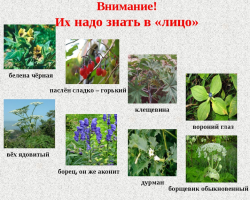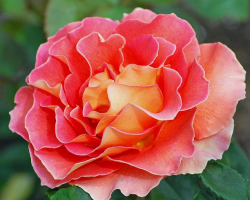Kiwi is a tree -like vine. In the agrarian world, it is called Chinese actinidia, some, in common people, is often called Chinese gooseberries.
Content
- The most common kiwi varieties
- How to grow kiwi at home?
- Correct conditions for flowering kiwi at home
- Elimination of kiwi seeds for growing at home
- Ciwi seeds at home: how to germinate?
- Ciwing Ciwi at home seedlings and cuttings
- Top dressing, watering and pruning kiwi at home
- Preparation of young plants of kiwi for winter at home
- Incorrect care of kiwi at home is the main cause of the death of the plant
- Video: growing kiwi from seeds at home
Comfortable conditions for growing kiwi are tropical and subtropical climate. However, in the modern world there is nothing not possible and therefore it is not difficult to create optimal conditions for growing kiwi in regions with another climate today. Some of them are hardy and unpretentious varieties. They are not frightened by a frequent change in temperature and even, oddly enough, frost.
The most common kiwi varieties
To date, the most common varieties of kiwi for growing at home are:
- Haired - One of the sweetest varieties. The fruits on average reach the size of about 150 g. Also, very large leaves and rapidly growing shoots are characteristic of this species. Flowers during flowering have a slightly cream tint. The ripe fruit of this variety is different increased juiciness and easily separated peel. The significant disadvantages of this variety are considered later maturation and necessity in a large territory.
- Bruno - It is characterized by the fact that it brings the crop in the third year and the fruits on it are sedding it quickly enough. They reach a weight of up to 100 g each. Liana leaves have white color during flowering, when they bloom, three pieces are formed. The fruits of this variety are particularly aroma.
- Abbott - It is widely popular due to good yield and resistance to frost. Can withstand the temperature up to - 25 ° C. Fruits of medium size and have an oblong oval shape. The ability to bring the crop is in the third year of plant life.
- Monty - This is a hybrid variety of kiwi, the fruits of which have muffled taste. They reach medium size. During flowering, flowers acquire lavender color, and the leaves become turquoise. This type is inherent in a long life (up to 10 years) and resistance to weather changes. Most often, the fruits of Monti varieties are used in cosmetology.

- Weiki - This is a dwarf variety of kiwi that was created in Germany. Ripe fruits reach no more than walnut. The positive sides of this variety are the benefits due to an increased level ascorbic acid and unpretentiousness during cultivation.
- Issai “Another miniature kiwi variety that was bred in Japan.” It has sweet and aromatic fruits that begin to bear fruit in the third year of plant life. A distinctive feature of this species is resistance to increased frosts. It is also advisable to plant this variety in darkened areas.
- Tomri - The male variety of kiwi, bred for pollination of late female varieties. It has a saturated sweet taste of ripe fruits. This type is frost -resistant.
- Matua - Another male variety, which, when growing requires additional wooden supports. When flowering, cream flowers dissolve.
How to grow kiwi at home?
- For the first time, kiwi began to grow in China, and create new varieties in Zealand.
- As a rule, a large number of clusters ripen at the tops, which, with their appearance, resemble large gooseberry berries. Depending on the variety of kiwi, they can have a smooth or rough surface.
- Ripe ripe berries are rich in a large number of useful vitamins and macro elements. Among them are potassium, magnesium, phosphorus, vitamins C, E, PP, B1, B2, B6, B9.
- In addition, the fruits contain useful starch and dietary fiber.
- Another significant plus is the fact that, despite its sweetness, kiwi is considered a low -calorie product. It is often recommended for use even with the hardest diets.
- Kiwi landing at home is recommended in spring periodWhen it is no longer cold, but not too hot.
- You also need to be prepared for the fact that getting the crop will not work quickly. Most often, seedlings will be able to bear the first fruits no earlier than after 5 years of planting.
The soil
- For planting kiwi is suitable a mixture of peat, large sand from the river and earth In proportions: 1: 2: 3. Also, you can slightly add a little shell from the egg to this mixture.
- An additional soil option is vermiculite, humus and peat In the same quantities.
Men's and women's seeds
- An important point in growing kiwi is that this plant belongs to dioecious. This means that in order to obtain a crop, it is necessary to cross two types of plants of different species.
- Determine what kind of plant has, you can only during flowering.
- The male look always acts as a pollinator and during flowering they have stamens filled with pollen, and female contains only pistils.
- One male kiwi variety can pollinate up to 7 female, provided that they are in a radius of not more than 4 m.
An interesting feature of kiwi is pollination using wind, not insects.
- Scientists managed to make an exception to the Rules of the Kiwi Jenny variety. Its advantage in self -pollination. This is the only type of kiwi that does not need another variety or pollination using insects.
Correct conditions for flowering kiwi at home
- To get flowering kiwi at home, it is already necessary at the initial stage to create comfortable conditions to the plant.
- The main element of successful flowering is lighting. All kiwi varieties are photophilous. Therefore, you need to select the place where the sun is the maximum amount of time.
- Another detail that is worth thinking about in advance is the ability to grow. Initially, for planting kiwi, you need to choose a large spacious area.
Elimination of kiwi seeds for growing at home
There are two options to get kiwi seeds:
- The first - buy ready -made seeds or seedlings In special botanical stores or greenhouses. This option for purchasing kiwi seeds is the most reliable. It guarantees in any case, subject to simple rules to care for the plant, to harvest from it a crop.
- If you like to experiment, you can use a more risky option - to remove seeds from the fruit of any grade bought in the store. First you need to pay attention to the appearance of the fetus. It should be without obvious signs of damage and rot. Ripe kiwi is easy to recognize by a sharp pleasant aroma. On average, each fruit contains about 2000 seeds.
Before picking up the seeds, kiwi is washed and peeled.
- After that, the pulp is cut into 6 even parts and put in a deep bowl.
- Then you should carefully knead the pulp with a fork or potato tape until the mass becomes homogeneous.
- Now you need to pour a glass of water of summer temperature into a bowl and start mixing everything with your hand, riding the seeds from the pulp. Water must be periodically changed, using sieve or gauze.
- On average, this procedure takes about an hour.
- After the pulp is completely removed, you need to drain the water so that only seeds remain in the mind.

- Next, you need to put the seeds on paper or cotton towel and leave in this form for two to three days so that they dry and change their color from the resin-black, to gray-brown.
- After that, they can be assembled in a package or paper envelope and left in this form until planting.
Before planting, take into account the moment that the seeds seized in this way will not be able to subsequently bring the same crop as ready -made seeds from the botanical store. Fruits from such a seed will turn out in 3 p. Less and will be inferior to the taste of berries sold in stores.
Ciwi seeds at home: how to germinate?
Before planting seeds in the soil, it is necessary to first germinate them.
There are several options to achieve the seedlings of kiwi seeds:
- On a flat plate of medium size, put the moistened cotton wool in the form of a carpet. After that, put the seeds on it in chaotic order and cover with cling film.
- Every day, it is necessary to ventilate the seeds. On average, with this departure, the seeds of kiwi will be allowed in a week in a week.
There is a second, longer option, in order to achieve the seedlings of kiwi seeds:
- To do this, put the seeds in the refrigerator for three weeks.
- After that, they need to be put for 10 days in a warm lit place. With such a sharp change in temperature, seeds will be allowed.
- It is worth noting that there are certain varieties of kiwi, the seeds of which do not require preliminary germination with water. They can be planted dry. However, it is worth considering that in this case they will germinate much longer.
The process of planting seeds in the ground itself is not complicated, but there are several nuances that are recommended to adhere to:
- To plant seeds, you need to purchase small pots. Pour drainage material on the bottom and create a layer of 4 cm. Pour a disinfected substrate on top so that 2/3 of the pot is filled. Preliminary disinfection can be carried out using steam, high temperature or cold.
- The resulting soil for growing kiwi at home should be watered or sprinkled with water to a humid state. After the water is absorbed, make shallow holes (about 1.5 cm) and plant seeds. Next, they must be filled with a thin layer of small sand on top and put into light.
- After that, the resulting bed is covered with glass or cling film to create a vacuum effect. Every day, pots must be completely opened for two to three hours to avoid fogging.
- All the time you need to ensure that the soil remains wet, but not wet. In case of evaporation, you need to additionally spray the beds with water.
- Three weeks later, seedlings must be protected, removing the weaker ones.

Plants must be thinned out - After a month and a half, plants should reach a height of 10-12 cm. In this case, they need to be planted on different pots, setting an additional support nearby. It is worth being extremely careful so that in no case do not damage the roots of kiwi during the transplant. The most optimal soil option for grown plants in equal proportions mix peat, soil and sand.
- Since kiwi plants have the ability to grow rapidly, the first few years they will need to be transplanted once every six months. After the 3rd summer period, this time will increase by once 2 years. The temperature in the room should not be prohibitively high.

Ciwing Ciwi at home seedlings and cuttings
- Liana from kiwi can be grown not only from seeds, but thanks to seedlings and cuttings.
- When propagating cuttings, those that have at least 3 kidneys are used.
- Below under the extreme kidney, the stalk is cut obliquely.
- Then it is put in the water no less than half a day.
- In parallel, you need to prepare pots for seedlings and fill with a mixture of peat and sand.
- After 12 hours, the cuttings need to be planted in pre -prepared soil and covered with hermetically.
- Then put in a warm bright place.
- Every day the coating must be removed so that there is no fogging. Spray the leaves with water and monitor the level of moisture.
- After a month, they need to be transplanted into separate containers with prepared soil.

Top dressing, watering and pruning kiwi at home
- Young plants, due to their growth, require constant nutrition with useful substances. And since, to a certain stage, they grow in artificially created soil, they must be periodically fed.
- Every 2 weeks after planting plants in individual pots, it is recommended to add a small amount to the soil compost.
- As noted above, kiwi require constant access to water. Therefore, the soil should always remain moist. However, in no case can a large amount of water be poured, otherwise the root system can occur.
- Excess water must be drained, and pots should have holes for excess moisture.
- In the case when the plant is already growing on the street, the ground needs to be watered only when the crusts are formed on the surface of the soil due to drought.

Kiwi pruning:
- Like most other vines, kiwi varieties also need periodic pruning.
- Indoor seedlings, which reached about 30 cm high, must be cut by removing 2-3 last kidneys.
- Adult vines growing on the street must be cut once every 5 years, cutting off old, affected, creating density branches.
- With proper pruning, you can extend the life of kiwi up to 60 years.

Preparation of young plants of kiwi for winter at home
- Most kiwi varieties are resistant to frost. However, they acquire their full immunity to protect against the cold, they acquire only to three years of life. Until this moment, it is necessary to prepare the plant for winter in late autumn.
- Need cut all the dried shoots, and fruitful to cover with fir branches and a layer of peat.
- Such protection will protect the root system from hypothermia and, at the same time, will penetrate the necessary dose of lighting into it.
Incorrect care of kiwi at home is the main cause of the death of the plant
With insufficient care of the kiwi vinas, unpleasant situations can occur, after which the plant will die.
The cause of death may be:
- insufficient lighting;
- disadvantage or excess of moisture;
- fungal infections;
- pests, in the form of insects.

When a fungal infection appeared on the vine, you can prevent the death of the plant and save the situation, adhering to a number of rules:
- remove dried and rotting leaves;
- wash the roots of kiwi and cut off the places of decay;
- create new soil and plant a plant again;
- periodically spray the leaves with a solution of fungicide.
If the pests are detected on the vinu vinet, it is necessary to immediately take measures:
- trim dried and rotting leaves;
- wash the whole plant with cute water from laundry soap;
- spray Liana with insecticide.
Remember that in order to collect a good harvest from any variety of kiwi grown at home, you must carefully monitor the plant at each stage.
We will also tell:
- Chrysanthemums - landing and leaving in open ground
- How to grow pineapple at home from the top, seeds
- How to grow a Christmas tree at home
- How to grow dill from seeds on a windowsill in an apartment
- How to plant and grow a mint in a pot at home








